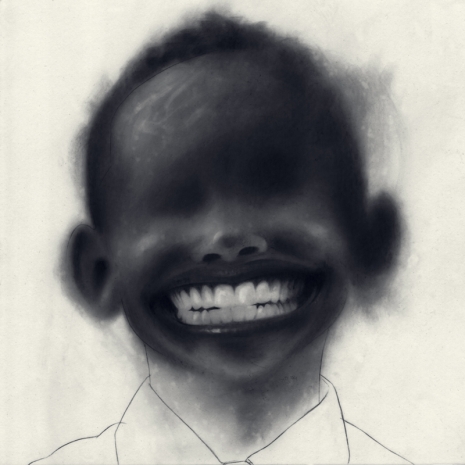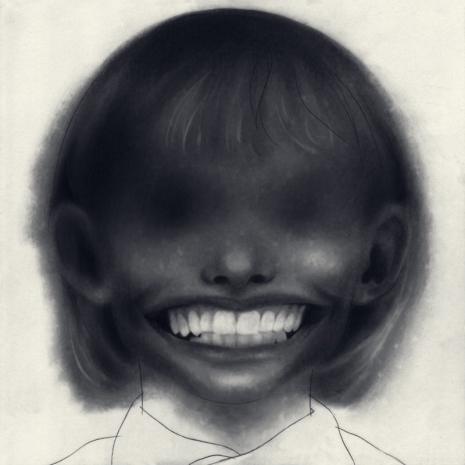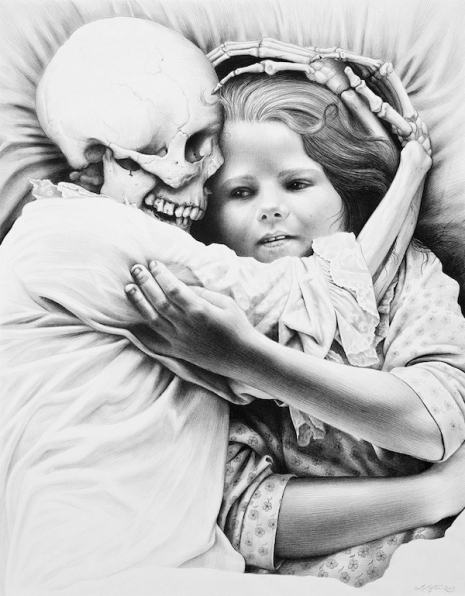
‘Death and the Maiden.’
Laurie Lipton has been drawing pictures since she was four years old. Her art serves as her “main means of communicating.”
When I sit down to draw a whole life time of experience comes into play…My imagery is the result of many associations, thoughts, feelings… I think in images…The creation process is the effort to communicate…not only to an “audience” but to myself. It serves an inner need. If I weren’t allowed to create, I believe I would become psychologically, perhaps even physically, ill.
Born in New York in 1953, Lipton was encouraged by her parents to develop her talents. She attended the Carnegie-Mellon University in Pennsylvania, where she became the first person to graduate with a Fine Arts Degree with honors in Drawing. Unfortunately, Conceptual Art was then all the rage and Lipton’s art teachers told her “figurative work went ‘out’ in the Middle Ages.” Lipton disagreed. She bucked the trend for what was then considered fashionable and decided to stick to her own ideas about art and what she should draw. She skipped class and taught herself drawing by studying art books in the college library on artists like Vermeer and Goya.
After graduation, Lipton traveled around Europe visiting museums trying to figure out how to paint. But this proved more difficult. Instead, she developed her own unique style of drawing where she uses a charcoal pencil to minutely layer each picture with thousands of tiny marks or lines which are slowly built up to create a far more luminous and rounded image. This process takes months to achieve. The incredible detail in each picture can only be truly appreciated at first hand or by taking a magnifying glass over the surface of the paper.
Lipton’s work is often labeled “surrealist.” It’s a term she eschews, preferring to see her work as closer to medieval religious painting where she has replaced the icons of Jesus and the Virgin Mary with iconography from the twentieth-century to tell her own personal story. More recently, this has included her response to the horrors of war, alienation caused by technology, and our “post-truth” world where everything washes over us like fiction and only the truly personal impinges on our reality. This has led to drawings such as Post Truth, Virtual Reality, and The Watchers. This last work, The Watchers, was inspired by the true story of a woman who was murdered in front of an apartment block, where not one of the occupants attempted to intervene to stop the killing or even contact the police—one resident turned up the volume on his television to drown out the victim’s screams. The picture opens like a double-door. The front shows a young girl peering through a set of blinds. Inside, the picture opens out to reveal the murder and the apartment block with its blind witnesses.
Lipton is a brilliant and extraordinarily talented artist and more of her work can be seen here.
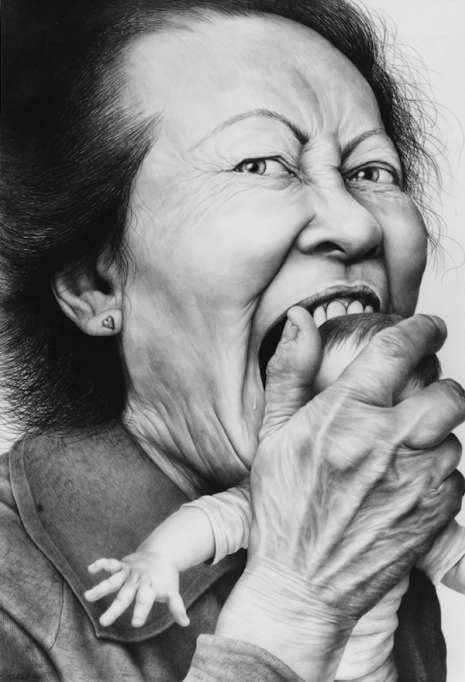
‘Love Bite.’
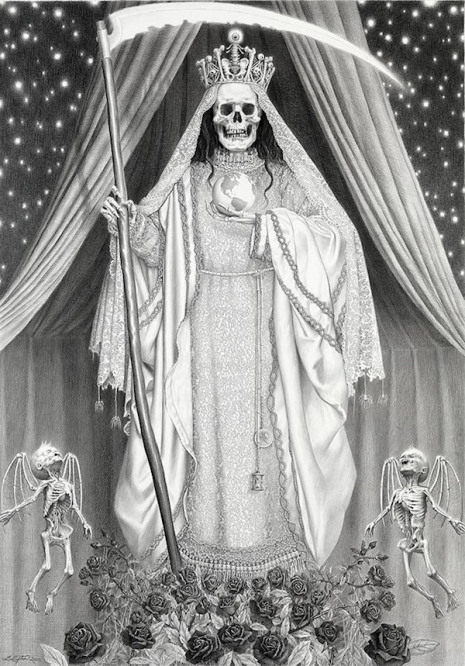
‘Santa Muerte.’
More extraordinary drawings plus a documentary on Laurie Lipton, after the jump…









